One of my favourite things to do is listen to Podcasts. I’ve always enjoyed listening when driving or walking the dog, but especially since becoming a mom since my time available for learning has plummeted. Podcasts let me consume content while doing something else! The Balanced Bites podcast is one of my favourites, and it was also the first place I learned about Cold Brew Coffee (a popular brand in the USA is a sponsor).

Fairly early into my coffee journey (I started enjoying a cup daily midway through high school. I blame my parents! lol) I realized iced coffee was amazing. But my favourite was a super sweet fake dessert iced coffee from Starbucks – so not super ideal for health. Then one VERY HOT summer working on a rooftop restaurant in Toronto, I started drinking plain ol’ iced coffee with some milk and sugar. I quickly learned that the best results came from brewing an espresso, chilling it and then turning it into iced coffee – that way it wasn’t watered down like when you brew coffee and try to chill it quickly with just ice! But it also took forethought.
Fast forward to this summer, where my coffee obsession is fairly high (this time I blame the baby. Ha!) and it’s hot. I’m often heading out in the morning when I want my second coffee, and can’t stand drinking hot coffee on a hot day. I tried to make an extra pot in the morning and chill it for later, but it doesn’t usually happen. That’s why DIY Cold Brew entered my life.
Cold Brew Coffee is exactly as it sounds. Coffee that’s been brewed cold, instead of with hot water. There are many reasons for the rise of Cold Brew Coffee – with the most common being the smooth, rich flavour it has combined with the less acidic feeling in the stomach. I like it because it takes 1 minute to prep and allows me to have iced coffee all week! Here’s how:
Homemade Cold Brew Coffee
1. Measure out ¾ cup of organic, fair or direct trade coffee (why direct trade?), ground on the coarsest grind setting you have. I’m sure a high powered blender would work if you don’t have a coffee grinder. Fine grind = bitter coffee, so make sure it’s coarse! Coarser (like with a mortar and pestle coarse) is better than fine any day!
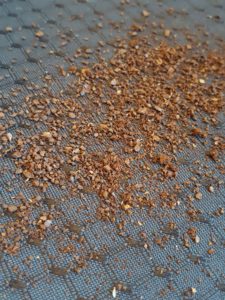
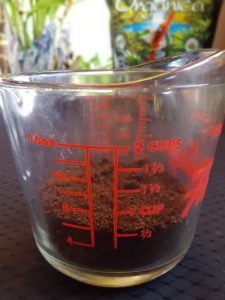
2. Dump coarse-ground coffee grinds into a 1L jar.
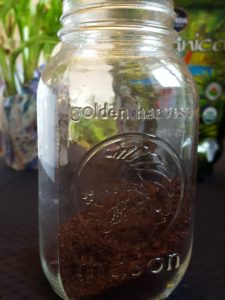
3. Add 3 cups of filtered water to the jar. It can be cold or room temperature. Secure lid and place in fridge for 12-24 hours. (Note, after making this once, I no longer measure the water because I know that the jar is almost full with the water and grinds combined!)
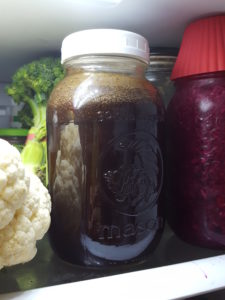
4. After desired length of brew (I like 18-24 hours best), remove from fridge, strain into another jar and voila – you’re done! Coffee for the week, or a few days if you are sharing with someone.
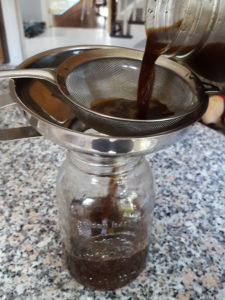
Keep in mind that cold brew is MUCH higher in caffeine. So enjoy smaller servings and/or water down with water, ice and your desired milk (I like full-fat coconut milk or grassfed cream). I also like to sweeten with a touch of maple syrup!
 My favourite way to enjoy cold-brew is:
My favourite way to enjoy cold-brew is:
- small cup, filled with ice
- ½ cup cold brew
- ¼ cup water
- 2-3 tbsp coconut milk
- 1-2 tsp maple syrup
You can also heat up cold brew and enjoy it like a normal cup of coffee! I do this on Crossfit mornings, when I want cup of coffee fast, and don’t want to wait for it to brew. I can have a delicious cup of coffee ready to go in less than a minute!
Are you an iced coffee drinker? Or are you a purest and only enjoy a cuppa joe hot. Share your favourite way for enjoying this delicious vice in the comments below!

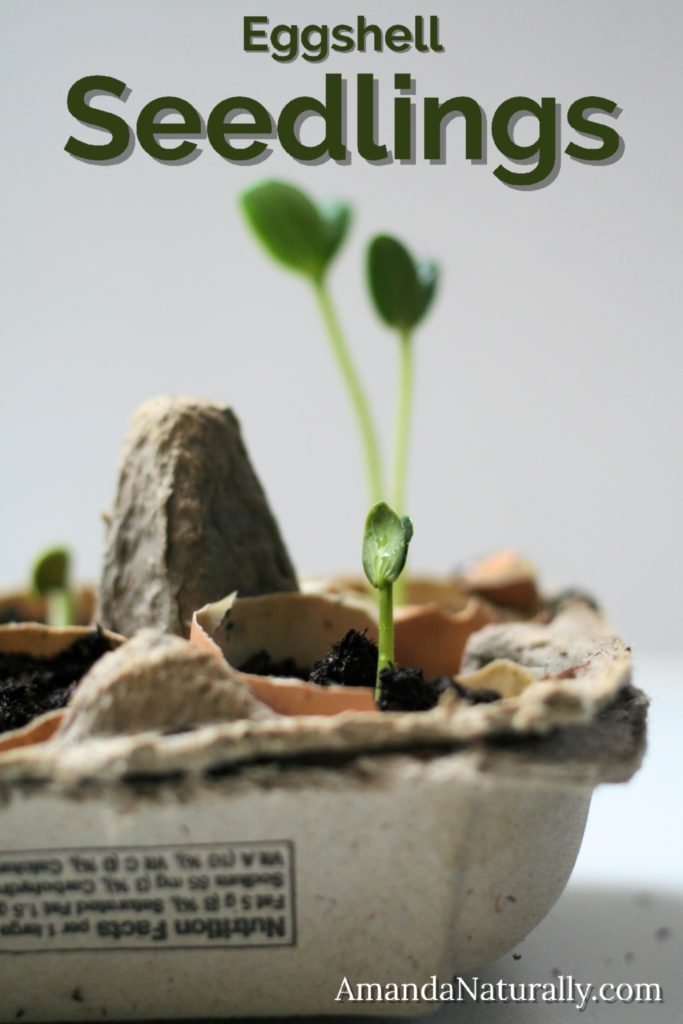 FULL DISCLOSURE: I am not a gardener. This is my husband’s project. He has a MAJOR green thumb, but he doesn’t have a blog, so I’m sharing his fun project with y’all today!
FULL DISCLOSURE: I am not a gardener. This is my husband’s project. He has a MAJOR green thumb, but he doesn’t have a blog, so I’m sharing his fun project with y’all today!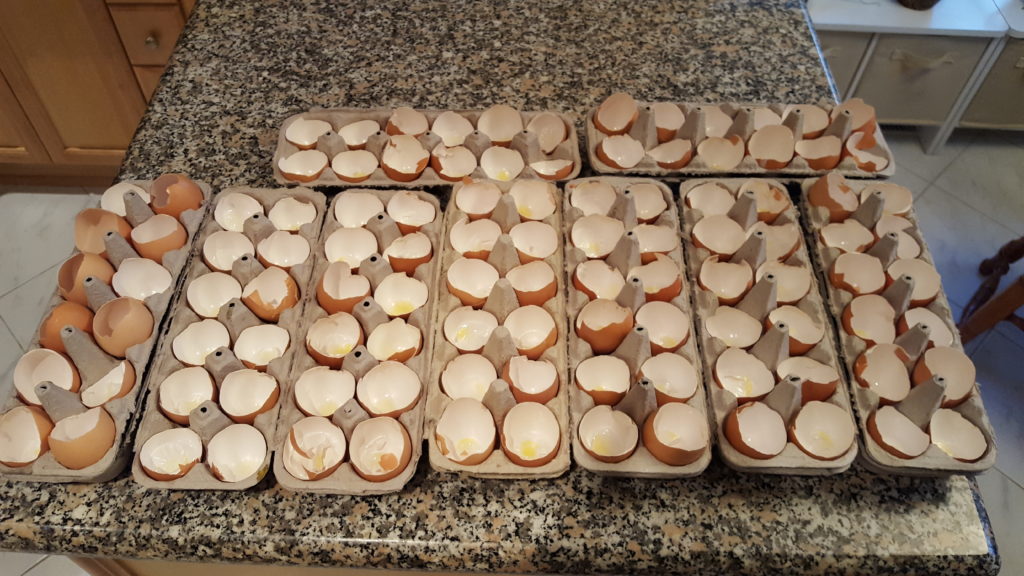


 Two things before I get into the meat of this post:
Two things before I get into the meat of this post: